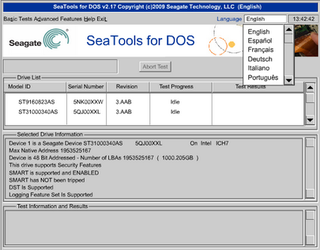

I have tried Seagate's SeaTools for DOS, Parted Magic and even straight hdparm via Linux terminal. Unfortunately, no crypto-erase will succeed. This can then be used to do a crypto-erase. The Seagate FDE.1 has a SID printed on the front of the drive (not a PSID), and the SID is set default as the drive's master password. Even the FDE's backup file shows they're the same as before. Well now it tells me either my username or password are incorrect and they're not incorrect. No big deal, right? Just use your password and log in to Wave Embassy Security Center and un-initialize it again. The problem now is that for some reason, after the system was reverted, it shows that the drive's DriveTrust security was somehow initialized again.

I used my password to log into Wave Embassy Security Center's Trusted Drive control panel and un-initialized the drive and reverted the system back about 6 hours before the updates were installed. The OS that was on it (Windows 7 Ultimate 64-bit) was having some issues after a few Windows updates so I decided to restore the system back to a previous state using Macrium Reflect Home edition. You can also use regular ATA security on it.Īnyways, here is the problem.
#SEAGATE SEATOOLS FOR DOS NO ERASE DISK SOFTWARE#
DriveTrust security must be enabled by 3rd party software like Wave Embassy Security Center or WinMagic SecureDoc.
#SEAGATE SEATOOLS FOR DOS NO ERASE DISK FULL#
The FDE.1 offers full disk encryption, though runs Seagate's security feature called DriveTrust. I have an older Seagate Momentus FDE.1 HDD (model ST9250424ASG) in an old Dell Latitude D820 which was set up with Wave Embassy Security Center from Dell.


 0 kommentar(er)
0 kommentar(er)
